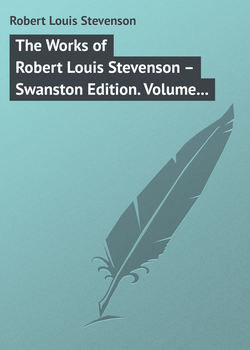Читать книгу The Works of Robert Louis Stevenson – Swanston Edition. Volume 24 - Robert Louis Stevenson - Страница 40
VII
THE RIVIERA AGAIN – MARSEILLES AND HYÈRES
To R. A. M. Stevenson
ОглавлениеLa Solitude, Hyères [October 1883].
MY DEAR BOB, – Yes, I got both your letters at Lyons, but have been since then decading in several steps. Toothache; fever; Ferrier’s death; lung. Now it is decided I am to leave to-morrow, penniless, for Nice to see Dr. Williams.
I was much struck by your last. I have written a breathless note on Realism for Henley; a fifth part of the subject hurriedly touched, which will show you how my thoughts are driving. You are now at last beginning to think upon the problems of executive, plastic art, for you are now for the first time attacking them. Hitherto you have spoken and thought of two things – technique and the ars artium, or common background of all arts. Studio work is the real touch. That is the genial error of the present French teaching. Realism I regard as a mere question of method. The “brown foreground,” “old mastery,” and the like, ranking with villanelles, as technical sports and pastimes. Real art, whether ideal or realistic, addresses precisely the same feeling, and seeks the same qualities – significance or charm. And the same – very same – inspiration is only methodically differentiated according as the artist is an arrant realist or an arrant idealist. Each, by his own method, seeks to save and perpetuate the same significance or charm; the one by suppressing, the other by forcing, detail. All other idealism is the brown foreground over again, and hence only art in the sense of a game, like cup and ball. All other realism is not art at all – but not at all. It is, then, an insincere and showy handicraft.
Were you to re-read some Balzac, as I have been doing, it would greatly help to clear your eyes. He was a man who never found his method. An inarticulate Shakespeare, smothered under forcible-feeble detail. It is astounding to the riper mind how bad he is, how feeble, how untrue, how tedious; and, of course, when he surrendered to his temperament, how good and powerful. And yet never plain nor clear. He could not consent to be dull, and thus became so. He would leave nothing undeveloped, and thus drowned out of sight of land amid the multitude of crying and incongruous details. There is but one art – to omit! O if I knew how to omit, I would ask no other knowledge. A man who knew how to omit would make an Iliad of a daily paper.
Your definition of seeing is quite right. It is the first part of omission to be partly blind. Artistic sight is judicious blindness. Sam Bough must have been a jolly blind old boy. He would turn a corner, look for one-half or quarter minute, and then say, “This’ll do, lad.” Down he sat, there and then, with whole artistic plan, scheme of colour, and the like, and begin by laying a foundation of powerful and seemingly incongruous colour on the block. He saw, not the scene, but the water-colour sketch. Every artist by sixty should so behold nature. Where does he learn that? In the studio, I swear. He goes to nature for facts, relations, values – material; as a man, before writing a historical novel, reads up memoirs. But it is not by reading memoirs that he has learned the selective criterion. He has learned that in the practice of his art; and he will never learn it well, but when disengaged from the ardent struggle of immediate representation, of realistic and ex facto art. He learns it in the crystallisation of day-dreams; in changing, not in copying, fact; in the pursuit of the ideal, not in the study of nature. These temples of art are, as you say, inaccessible to the realistic climber. It is not by looking at the sea that you get
“The multitudinous seas incarnadine,”
nor by looking at Mont Blanc that you find
“And visited all night by troops of stars.”
A kind of ardour of the blood is the mother of all this; and according as this ardour is swayed by knowledge and seconded by craft, the art expression flows clear, and significance and charm, like a moon rising, are born above the barren juggle of mere symbols.
The painter must study more from nature than the man of words. By why? Because literature deals with men’s business and passions which, in the game of life, we are irresistibly obliged to study; but painting with relations of light, and colour, and significances, and form, which, from the immemorial habit of the race, we pass over with an unregardful eye. Hence this crouching upon camp-stools, and these crusts.6 But neither one nor other is a part of art, only preliminary studies.
I want you to help me to get people to understand that realism is a method, and only methodic in its consequences; when the realist is an artist, that is, and supposing the idealist with whom you compare him to be anything but a farceur and a dilettante. The two schools of working do, and should, lead to the choice of different subjects. But that is a consequence, not a cause. See my chaotic note, which will appear, I fancy, in November in Henley’s sheet.
Poor Ferrier, it bust me horrid. He was, after you, the oldest of my friends.
I am now very tired, and will go to bed having prelected freely. Fanny will finish.
R. L. S.
6
Croûtes: crude studies from nature.
